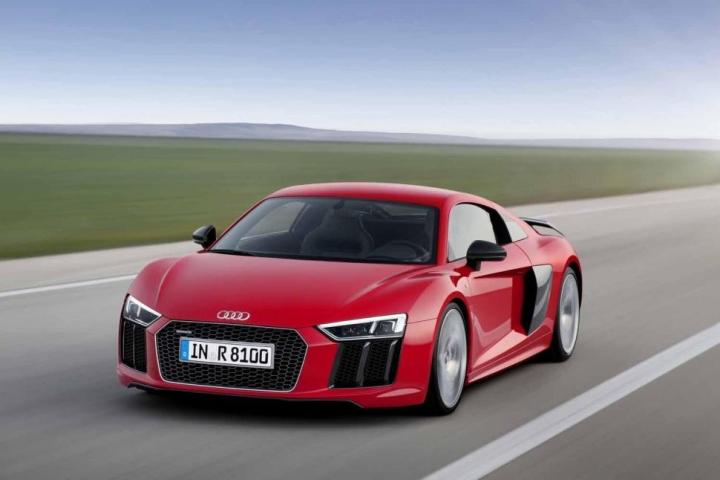
Case in point: the Audi R8 e-tron.
Audi’s first all-electric vehicle, the e-tron is the EV cousin to the V10-powered R8, and it turns out the silent supercar stacks up quiet well to its fossil fuel-burning counterparts.
The lucky dogs over at Autocar had the chance to drive the athletic beauty, and with their driving impressions came a new batch of specs.
The R8 e-tron weighs a hefty 4,056 pounds, and power output stands at a whopping 456 horsepower and 679 pound-feet of torque. 2012’s e-tron prototype made ‘only’ 381 hp and 605 lb-ft, so Audi’s boffins have clearly been hard at work over in Ingolstadt.
With a 0 to 60 mph time of 3.9 seconds, it’s not quite as quick as Tesla’s 690-hp Model S P85D, which accomplishes the feat in 3.2 seconds. It is significantly lighter though (the P85D weighs 4,629 lbs), which should make it a fairer match if these two ever meet on the track. Top speed currently sits at a limited 124 mph.
Another declaration of note is in regards to range. When Audi debuted the e-tron in Geneva last month, the German brand claimed a range of 279 miles. After piloting the car over 143 miles, Autocar’s tester reported a remaining range of 70 miles, so that estimate looks to be slightly conservative.
Of course, under hard acceleration and intense driving, EVs use up their fuel quicker just like any car, so keep that in mind.
For comparison’s sake, the base R8 V10 (the V8 has been axed for this generation) produces 540 hp and 398 lb-ft, allowing the 3,428-lb car to hit 60 mph in 3.5 seconds.
The V10 Plus, however, does the same in 3.2 seconds, thanks to its increased output of 610 hp and 413 lb-ft. It’s also lighter, with a more spartan curb weight of 3,205 lbs.
Editors' Recommendations
- 2024 Audi Q8 e-tron first drive review: 300-mile luxury EV cruiser
- Audi’s Q4 Sportback E-Tron will have customizable LED headlamps, 279-mile range
- Audi TT will get the ax to make way for electric cars — and the R8 may be next


